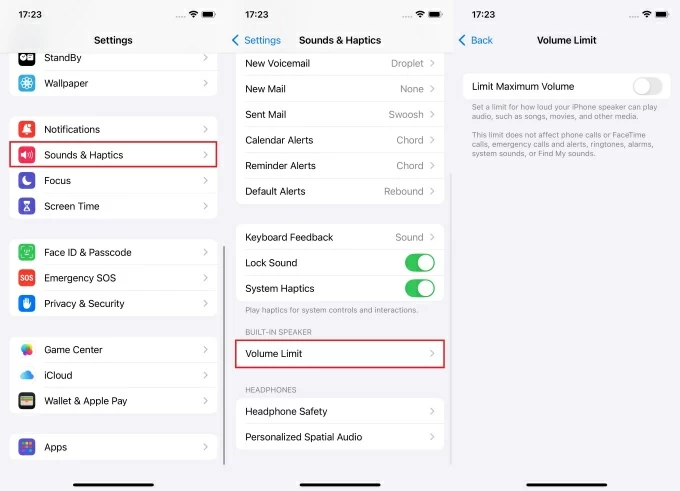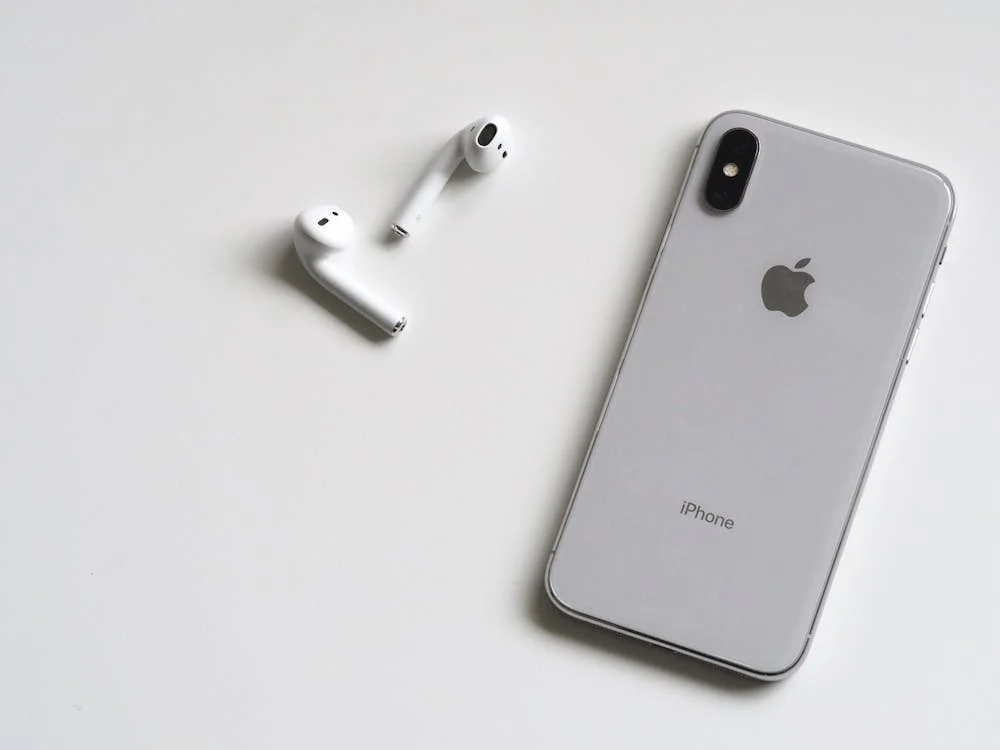Are you an aspiring musician, live performer, or just a music enthusiast looking to capture high-quality live tunes on your iPhone? You’re in luck! The market is abundant with microphones designed to elevate your iPhone’s audio recording capabilities to professional heights. But with so many options, how do you choose the best one for your live music needs? Fear not! We’ve scouted the top contenders that promise to deliver clarity, depth, and true-to-life sound, ensuring your live recordings truly resonate. Stay tuned for our listicle review of the best iPhone microphones tailored for recording live music, combining convenience with exceptional audio fidelity.
When looking for the best iPhone microphone for recording live music, it’s crucial to evaluate based on specific criteria tailored to live audio capture. Here’s a simple breakdown of what to consider:
- Audio Quality: The microphone should provide high-fidelity recordings with excellent clarity and low noise levels, capable of capturing the full range of sounds during a live performance.
- Compatibility: Ensure the microphone is fully compatible with your iPhone model and iOS version. It should connect seamlessly, either via the lightning port, USB-C port, or through wireless connectivity.
- Durability: Look for a robust design that can withstand the rigors of live recording environments, including handling and the occasional bump or drop.
- Portability: The microphone should be compact and lightweight for easy transportation to gigs or outdoor sets without adding unnecessary bulk to your setup.
- Ease of Use: It must be user-friendly, with a simple setup process that doesn’t require extensive technical knowledge. Plug-and-play options are ideal.
- Polar Patterns: A good live music microphone should offer the right polar pattern (like cardioid or omnidirectional) to focus on the music and reduce unwanted background noise.
- Additional Features: Consider extras, such as built-in preamps, headphone jacks for real-time monitoring, or app support for enhanced control over the recording.
These criteria will guide you in finding the best iPhone microphone for capturing the energy and sound quality of live music.
Please note that the prices can fluctuate based on the retailer, promotions, or new product releases and the below are approximate figures as of the last available data.
| Feature | Shure MV88 | Rode IXYL | Apogee MiC Plus | Zoom iQ7 | Sennheiser ClipMic Digital |
|---|---|---|---|---|---|
| Price Approx (USD) | $149 | $195 | $259 | $100 | $199 |
| Microphone Type | Condenser | Condenser | Condenser | Condenser | Condenser |
| Polar Patterns | Adjustable (Multi-pattern) | Cardioid (Fixed) | Cardioid (Fixed) | Mid-Side (Adjustable) | Omnidirectional (Fixed) |
| Connectivity | Lightning Connector | Lightning Connector | USB, Lightning | Lightning Connector | Lightning Connector |
| Frequency Response | 20 Hz to 20 kHz | 20 Hz to 20 kHz | 20 Hz to 20 kHz | 20 Hz to 20 kHz | 30 Hz to 20 kHz |
| Additional Features | 5 DSP Preset Modes, ShurePlus MOTIV App for Recording / Editing | Compatible with RDE Rec App for Recording | Blend feature for direct monitoring, No configuration required, Portable | Handy Recorder App for Recording / Editing, Rotary Mic Capsule for Alignment | High-quality preamp, Easy to Use with Apps like Apogee MetaRecorder |
Keep in mind that the best microphone for you will depend on your specific needs such as portability, ease of use, the kind of music you’re recording, and your budget. Make sure to check for the latest reviews, sample audio recordings, and current prices before making a decision.
Shure MV88 Portable iOS Microphone
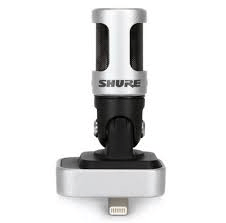
Overview:
The Shure MV88 immediately catches your eye with its sleek, compact design that hints at its portability and ease of use. It plugs directly into your iPhone’s Lightning port, negating the need for any cumbersome wires or additional hardware. When it comes to recording live music, the MV88 truly shines with its exceptional sound quality and directional clarity. Using the ShurePlus MOTIV app, you can tweak settings to your liking, significantly enhancing your recording experience.
My personal experience with the Shure MV88 has been overwhelmingly positive. If you’re out at a concert or an intimate gig, this microphone’s ability to capture the fullness of live sound without overwhelming background noise is impressive. The build quality feels robust, and its small stature means I can always have it on hand, just in case I stumble upon an impromptu music session.
Specs:
- Transducer Type: Condenser
- Polar Pattern: Adjustable (Includes Cardioid and Figure-8)
- Frequency Response: 20Hz to 20kHz
- Adjustable Gain: 0 to +36 dB
- Connectivity: Lightning Connector
Pros:
- Exceptional audio quality for its size; the recordings are clear and rich with detail.
- Highly portable and doesn’t require any battery or external power source.
- The build quality is solid, providing a reassuring sense of durability.
- Versatile recording options due to adjustable polar patterns, making it suitable for various environments.
Cons:
- Compatibility is limited to iOS devices with a Lightning port, which might be a drawback for some users.
- Potential for digital interference if you receive notifications or calls during recording.
Price:
As for the cost, the Shure MV88 strikes a balance between affordability and professional-quality sound, which is remarkable. While the price may be a touch steep for hobbyists, for anyone serious about capturing high-quality live music with their iPhone, it represents good value for money. The exact price can fluctuate depending on retailers and sales, but it typically falls into the mid-range bracket for mobile microphones.
In conclusion, the Shure MV88 is a powerhouse of a mobile microphone that marries convenience with stellar audio quality. It’s perfect for musicians, vloggers, and anyone looking to capture live sounds accurately and compellingly. Despite its few drawbacks, it remains a top recommendation for anyone in the market for an iPhone-compatible microphone for recording live music.
Rode IXYL Cardioid Condenser Microphone for iPhone
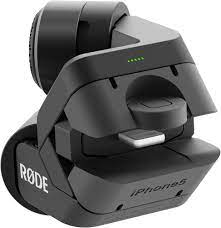
Overview
When it comes to recording live music with an iPhone, audio quality is paramount. That’s where the Rode IXYL Cardioid Condenser Microphone steps in, providing a significant upgrade from your built-in phone mic. This little powerhouse is specifically designed to capture crystal-clear audio, making it ideal for musicians, vloggers, and anyone in need of top-notch sound recordings on their iOS device.
What makes the Rode IXYL shine is its attention to detail in design and performance. One of its major strengths is the ability to handle high-pressure sound levels, which is a must for live music environments. The microphone itself is sturdy and compact, making it travel-friendly for on-the-go recordings.
From my experience with the Rode IXYL, I was thoroughly impressed with the recording fidelity. It’s obvious that Rode has packed in their professional audio expertise into a form factor that’s accessible to everyone. The ease of use is also spectacular; it directly connects to your iPhone via the Lightning port, and no additional power or equipment is needed.
Specs
- Type: Stereo Cardioid Condenser Microphone
- Frequency Range: 20Hz to 20kHz
- Signal to Noise Ratio: 76dB
- Connectivity: Lightning connector
- Sample Rates: 44.1/48 kHz
- Bit Depth: 24-bit
Pros:
- The sound quality is excellent, capturing the nuances of live performances with depth and clarity.
- Its cardoid polar pattern focuses on sound in front of the mic, which helps isolate the main source of audio from background noise.
- The build quality adheres to Rode’s high standards, robust and ready for field use.
- It’s incredibly user-friendly, with Plug-n-Play functionality requiring no additional software to start recording.
Cons:
- Its price point might be a bit steep for casual users who don’t need professional-level audio quality.
- The cardioid pattern might not suit all types of live music recording, especially when ambient sound capture is desired.
- Unlike some competitors, it doesn’t come with an app to control more advanced recording settings.
Price
At the time of reviewing, the Rode IXYL typically retails near the higher end of the market for smartphone microphones, reflecting its professional-grade quality. The exact price fluctuates, so it’s best to check the current listings for the most accurate pricing. But remember, while it might hit the wallet a tad harder, the audio quality you get is worth every penny for serious audio projects or live recordings that demand crisp sound capture.
In summary, if you’re serious about your live music recordings and want your iPhone to be at the heart of the process, the Rode IXYL is an investment that elevates your audio to professional levels— definitely a worthy addition to your audio toolkit.
Apogee MiC Plus
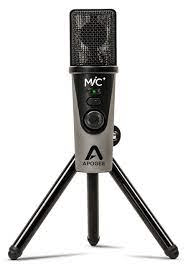
Overview
The Apogee MiC Plus is a professional studio-quality USB microphone specifically designed for capturing high-quality audio on the go. It’s a standout choice for musicians and content creators who seek to record live music with the clarity and richness it deserves. The MiC Plus is incredibly intuitive to use, offers plug-and-play functionality with iOS devices, and requires minimal setup, making it ideal for impromptu recording sessions.
As someone who has experience recording music, I appreciate the MiC Plus for its pure sound capture. It maintains the warmth and presence of live performances without the need for extensive post-recording corrections. Its cardioid polar pattern is effective at picking up sound directly in front of the mic while minimizing background noise, which is crucial in live environments.
Specs
- Microphone Type: Condenser
- Polar Pattern: Cardioid
- Frequency Response: 20Hz to 20kHz
- Maximum SPL: 130dB
- Digital Connectivity: Lightning connector and USB (compatible with iOS, Mac, and PC)
- Analog Output: No
- Resolution & Sample Rate: Up to 24 bit/96kHz
- Power: From iOS device or USB connection
- Accessories: Tripod, Lightning cable, USB cable, and carrying case
Pros:
- Exceptional audio reproduction that captures every nuance of live music.
- High portability with a compact design, and it’s very straightforward to set up.
- The build quality is solid, inspiring confidence in its durability for frequent, on-location use.
- The direct monitoring feature allows for real-time listening without latency, a true boon when trying to ensure the best recording in unpredictable live settings.
Cons:
- The lack of onboard gain control means you have to adjust input levels through your recording device, which might be inconvenient for some users.
- It’s on the pricey side, which might make it a less accessible option for amateur musicians or hobbyists.
Price
The Apogee MiC Plus typically retails at a premium price point, reflecting its professional quality. As a discerning buyer, you’ll find it’s priced around $259. However, given its audio fidelity and ease of use, it represents a worthwhile investment for serious musicians and professionals looking to capture studio-grade recordings outside of the studio.
Please note that prices are subject to change, and it’s always a good idea to look for specials or bundled deals which can offer more value for your purchase.
Zoom iQ7 Mid-Side Stereo Microphone
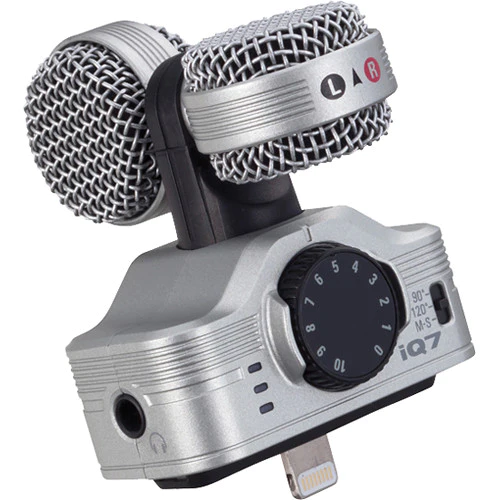
Overview
The Zoom iQ7 Mid-Side Stereo Microphone is an innovative accessory that offers iPhone users a level of audio quality that’s a significant step up from built-in iPhone mics. Designed to work directly with an iPhone or iPad equipped with a Lightning connector, the iQ7 is a compact and portable option for capturing live music directly on your device.
What’s remarkable about the iQ7 is the degree of control it gives you over your stereo image. With its mid-side recording technique, it combines a forward-facing, mono-compatible mid mic with a side mic that captures left-right signal. This lets you adjust the width of the stereo image, which is particularly useful when recording live music, as it can translate the sense of space and dimensionality you experience in person. Through the Zoom Handy Recorder app (free for iQ7 users), manipulating this setting is an intuitive process.
Specs
- Microphone Type: Mid-Side Stereo Mic (one cardioid and one figure-8)
- Audio Quality: 16-bit/44.1 or 48kHz
- Connector: Lightning
- Compatibility: iOS devices with Lightning connector
- Controls: Microphone gain wheel & 3-way switch (90°/120°/M-S)
- Additional Features: Rotatable design for alignment with your device’s camera, dedicated headphone jack for monitoring
Pros:
- Delivers a versatile and adjustable stereo image that enhances live recordings.
- Offers a level of portability that’s hard to match, making it reliable for impromptu recording sessions at gigs or practices.
- The Handy Recorder app is not only easy to navigate but also expands the functionality significantly.
- The built-in headphone jack is a huge plus for real-time monitoring, ensuring you get the best take every time.
Cons:
- Limited to 16-bit audio quality which, while acceptable, isn’t the professional standard of 24-bit offered by some competitors.
- The plastic construction doesn’t feel as premium as some metal-bodied alternatives—but this does help to keep it lightweight and portable.
- Some users might require an additional lightning extension or adapter if they’re using a case with their device.
Price
As I’m focusing on sharing my opinions, I won’t list a specific price for the iQ7. Prices fluctuate over time and across retailers. However, for a device of its capabilities, expect to find the Zoom iQ7 in a mid-range price bracket. It’s not the cheapest option out there, but not the most expensive one either. In my estimation, its price reflects a good balance between cost and quality, especially considering the advanced stereo functionality it offers for live music recording.
Final Thoughts
Overall, the Zoom iQ7 is a pretty impressive piece of kit for any musician or audio enthusiast looking to get serious about recording on their iPhone. Its mid-side capabilities are not often found in other mics of this size and price, making it unique in its offering. While it may not be the ultimate ‘pro’ solution given the 16-bit limitation, it strikes a balance that leans towards high-fidelity without becoming prohibitively expensive or complicated for non-professional users.
Sennheiser ClipMic Digital
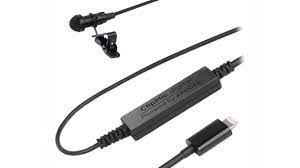
Overview:
When it comes to recording live music on your iPhone, you want a microphone that’s both unobtrusive and capable of capturing high-fidelity sound. That’s where the Sennheiser ClipMic Digital shines. Right off the bat, its compact design impresses, with a sleek, clip-on form factor that’s tailor-made for mobility. The ClipMic Digital’s primary allure comes from its collaboration with Apogee, bringing in their top-notch A/D conversion and microphone preamp technology to ensure your recordings are crystal clear.
Specs:
- Omnidirectional condenser microphone
- Apogee 24-bit/96 kHz digital connection to iPhone
- Lightning connection for iOS devices
- Metal windscreen
- Frequency response: 30 Hz to 20 kHz
Pros:
- The ClipMic delivers incredibly accurate sound, which is essential when you’re dealing with the intricacies of live music.
- Its discreet design means you can set up and record without drawing attention, preserving the natural performance atmosphere.
- The plug-and-play functionality is a huge plus, particularly when you want to capture those impromptu musical moments quickly.
Cons:
- The cable length could be a limitation if you’re trying to record from a distance.
- The price point might be considered steep when pitted against other budget-friendly competitors.
Price:
The Sennheiser ClipMic Digital typically ranges between $199-$229, though it can fluctuate depending on where you shop. This price tags it as a premium choice, but for those who prioritize audio quality and portability, it’s an investment that makes sense.
In my opinion, the ClipMic Digital stands out primarily for its impressive audio quality. The collaboration with Apogee really pays off, as it seems every subtle nuance of live music is caught beautifully. Furthermore, the ease of use—it’s very much a plug-in and start recording type of device—makes it ideal for musicians, journalists, and content creators who are on the go. The discreet nature of the microphone also ensures that it won’t be distracting in a live music setting, which can be crucial when trying to maintain an authentic recording environment. While the price is on the higher side, the quality of the recordings you get with the ClipMic Digital justifies the investment, especially if you’re serious about capturing the best audio possible with your iPhone.
Conclusion:
In summary, each iPhone microphone presented in our listicle offers unique attributes tailored to enhance your live music recording escapades. From high-fidelity sound capture to portable and rugged designs, there’s a mic to suit every musician’s needs. By investing in one of these microphones, you’ll take a significant leap towards professional-quality audio, capturing the essence and dynamism of your live performances with greater ease and clarity. Remember to consider your specific recording environments and the features that matter most to you when making your choice.
If you’re searching for unbeatable audio clarity and total mobility for your live music recordings, a wireless lavalier microphone can transform your setup. Compact and easy to connect to your iPhone, it ensures you capture professional-sounding audio every time, without cumbersome wires.
FAQs:
Q1: Do these microphones require additional power or batteries?
A1: It depends on the microphone. Some plug directly into your iPhone and draw power from the device, while others may require separate batteries or charge. Check the specifications of each microphone for power requirements.
Q2: Will these microphones work with any iPhone model?
A2: Most of the microphones are designed to be compatible with a range of iPhone models. However, it’s important to verify the compatibility with your specific iPhone model, especially considering the varying connector types (Lightning or 3.5mm headphone jack).
Q3: Can I use these microphones for other types of recordings besides live music?
A3: Absolutely! While these microphones are excellent for recording live music, they’re versatile enough to be used for other recording needs such as podcasts, interviews, and even video production, providing high-quality audio in various settings.

































.png)




